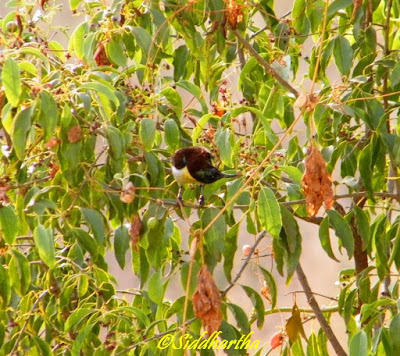Birds of Western Ghats-2:
It has been almost an year in Kolhapur Western Ghats .
The Ghats are magical, I am yet to come across a days visit to Ghats where in I have come empty handed.
These are some of the collection of photographs which I took while my several visit to Ghats . Along with the photographs I am also sharing some of the information about these birds which I am aware of.
The Great Tit: The Great Tit is a treat to watch. They belong to the Paridae Family. It eats a variety of insects. They are found among the foliage of trees, gleaning insects from crevices in twigs and branches and breaking open thorns looking for larvae. The Black line on the white chest makes a stylish statement. They usually live in pairs.
The Green Bee Eater: The Green bee eater is a perfect example of designing by evolution. The long beak ensures that they do not get any bites or damages from there preys. They predominantly eat insects, especially bees, wasps and ants;
A fine black line runs in front of and behind the eye, I suppose these lines acts as sun shades for countering the Sun shine in short distance range.
The best part of watching these bee eaters is the time when they do prey. They keep on sitting on a perch and as soon as they find bee or an insect in the air they take a dive and catch the bee in the mid air and comes back to the perch. This keeps on happening for quite a number of time. I was surprised to see such a good diet for a small bird.
The Purple-rumped Sunbird: These birds are limited only to Indian Sub continent. They mostly eat flower nectar. The males are more colourful then female. The photograph featured in blog is of a Purple Rumped sunbird is of a male.
The Asian Koel: The Asian Koel belongs to the Cuckoo family of birds. The Males are entirely black coated, where as the females have a grey spotted coat. Both have one thing in common and that is the red eyes. They are regarded as the harbinger for the monsoons in India
Jungle Babbler: The most striking feature that I have always observed about the Babblers is the fact that they always live in groups. The groups usually consist of 6 to 7 members. They is no major differences in Male and females.
I have found these babblers even in Radhanagari Wildlife sanctuary as well as backyard of my sisters home in Nagpur














1 comment:
It is just amazing. I m in love with each one.
u r superb man.. ur photography n ur writing both...
Post a Comment